
Domestic
10:26, 20-Feb-2019
Turning grey before getting rich: China's ageing population
By Yu Jing
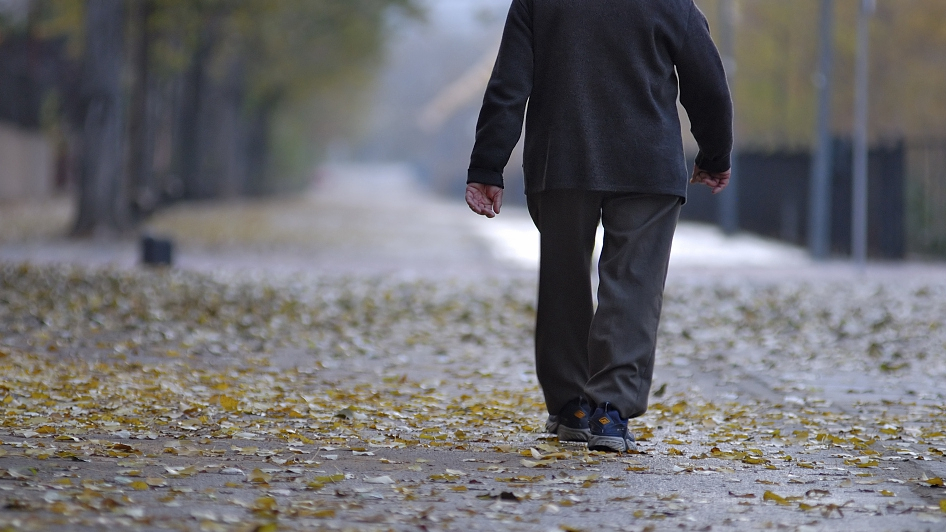
At the age of 57, Mu Zhiming is coming to terms with the inevitable truth that he will take up residence at a nursing home in a few years' time.
With his son in the U.S. and a stroke paralyzing his wife, he has no one to turn to when in need of care. Though his monthly pension of 9,000 yuan (1,300 U.S. dollars) is already in the highest income bracket, he cannot afford the one-million-yuan membership fee of a private senior care center. To secure a spot at a rest home, he plans to sell his apartment.
Mu is already one of the most fortunate among China's elders. For the majority of the 249 million elders in the country, such an option is virtually unthinkable given that the average monthly pension is around 2,500 yuan (340 U.S. dollars).
But with 17.9 percent of the country's population now over the age of 60, and a generation of single children bearing the entire cost of supporting two senior parents – and perhaps grandparents too, elders in China are likely to face a tough reality as they grow older.
National rush to old age
China's population is turning grey at an unprecedented speed. In 2030, the population is expected to start shrinking, according to a study by the Chinese Academy of Social Sciences published earlier this year.
By 2050, the number of people aged 60 or older in China is forecast to reach 487 million, or 35 percent of the population. This figure is even higher than that in what are known as "super-ageing" societies, like Japan, where 33 percent of the population is over 60.
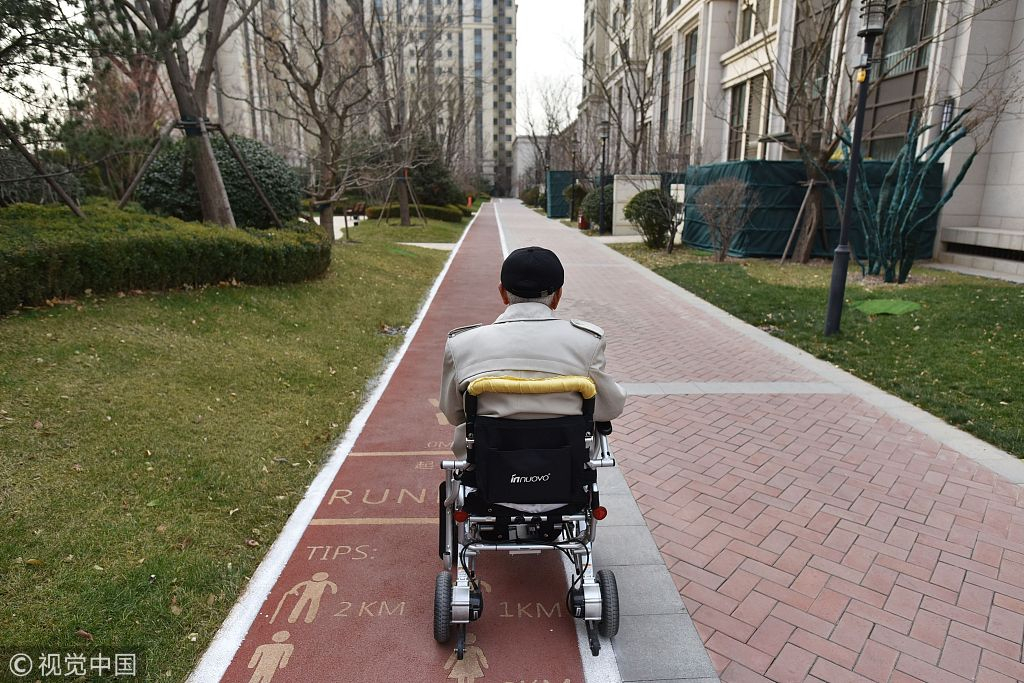
An old man makes his way back to his apartment in an electric powered wheelchair at a senior care center. /VCG Photo
An old man makes his way back to his apartment in an electric powered wheelchair at a senior care center. /VCG Photo
"It took China less than 20 years to hit the scale of ageing that northern European countries achieved in 30 to 40 years," says Professor Huang Wenzheng, a research fellow at the Center for China and Globalization, in an interview with CGTN Digital.
The one-child policy, in place from 1979 to 2016, transformed the family structure in China to a reversed pyramid where a single child supports two parents and four grandparents.
"When I turn 70, my son, who would turn 40, would be at the peak of his career. Can I count on him to rush to my house every time I slip and fall on the bathroom floor? Even if I can, should I?" Mu wonders.
There are not many options lying ahead for him.
He could stay at home and hire a live-in nurse who would charge him as much as 6,000 yuan per month. He could also move into a local community center that provides senior care, but where, other than a bed, not much else is available. Or, he could live at a high-end senior care center, though it comes with a hefty one-million-yuan price tag and a monthly fee of 5,000 yuan.
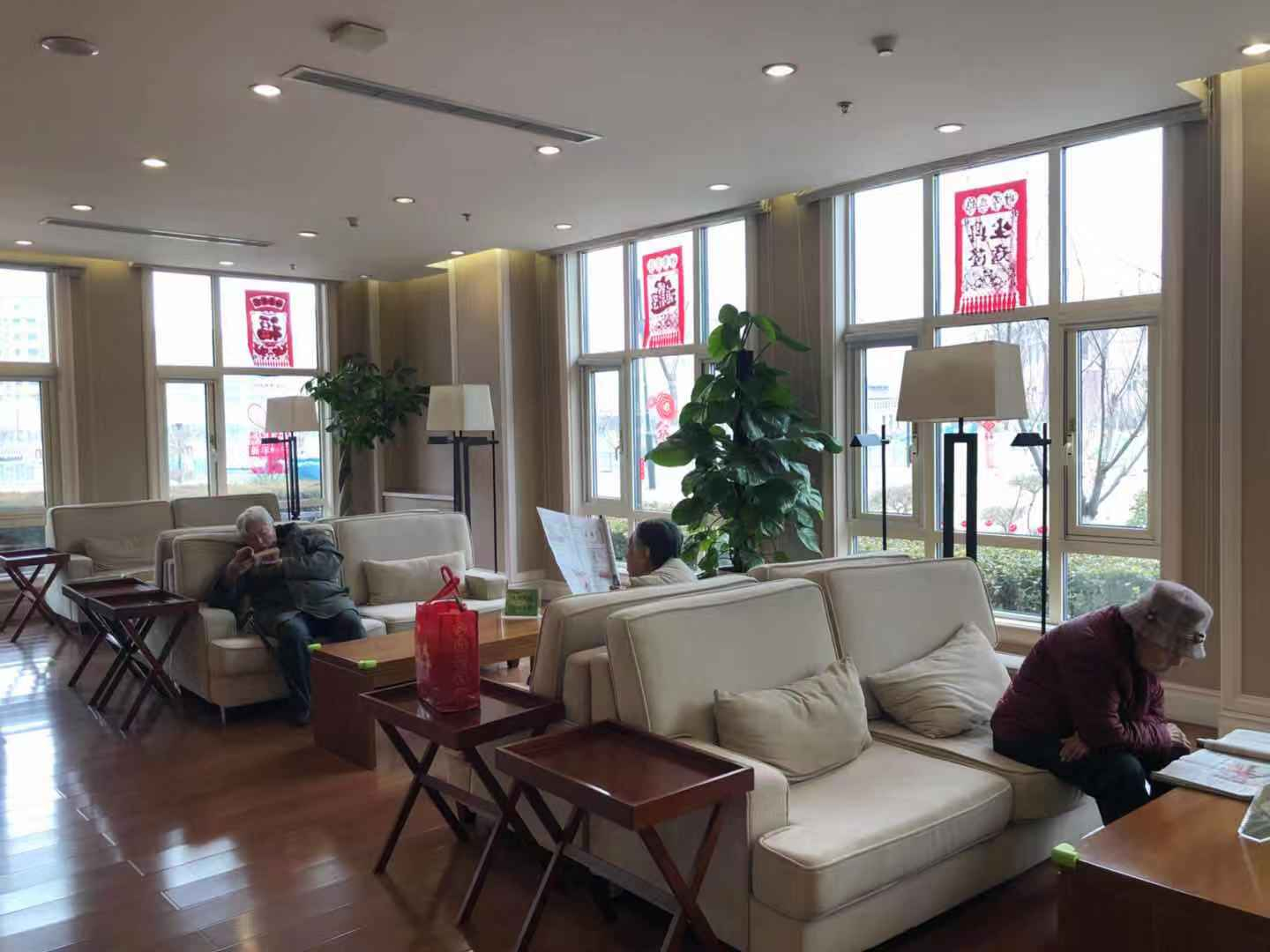
Elders read books at the library of high-end senior care center Kangning Jin in Tianjin, north China. /CGTN Photo
Elders read books at the library of high-end senior care center Kangning Jin in Tianjin, north China. /CGTN Photo
Expensive costs aside, a cultural prejudice against sending old people to senior care centers has also made it hard for Mu to accept his likely fate.
The concept of filial piety translates into an entrenched belief that the purpose of raising a child is to secure a caregiver in the future. To send one's parents to a senior care center is a breakaway from such a social ethos and a shameful act.
"The Chinese population is turning grey before becoming rich," says Professor Huang.
The rapid speed of ageing caught the entire country off guard, with the senior care infrastructure unprepared for the ageing crisis.
Untapped potential in senior care industry
Senior care centers hold a rather bad reputation for being crowded with residents looking like nothing but hospital patients. But high-end senior care centers challenge such a traditional belief.
At the age of 87, Yan Meiyi is still rosy-cheeked and a good conversationalist. After moving to a high-end retirement compound in Tianjin, north China, she says she "never felt old for a single moment."
"There are always classes to go to, activities to join…I don't have time to think about my age," Yan says.
The private complex Yan lives in houses 1,200 elders who are mostly former university professors, intellectuals, government cadres and employees of state-owned enterprises.
A timetable detailing the activities at the institution shows more than 10 types of classes organized every day, ranging from English courses, calligraphy, painting, and Latin dance…almost all are organized and taught by elders.
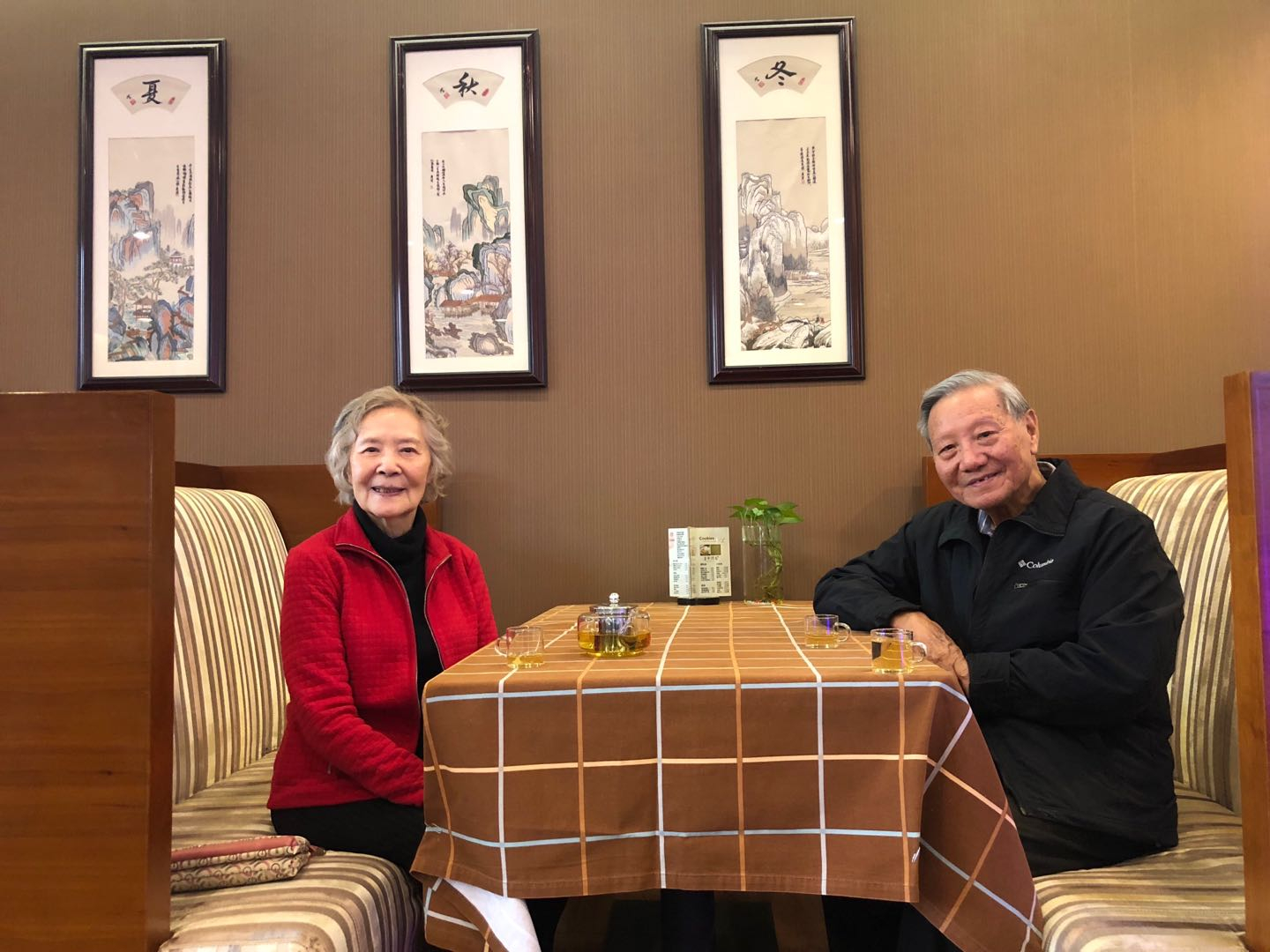
Yan Meiyi (L), 87, poses with a friend at the senior care center. /CGTN Photo
Yan Meiyi (L), 87, poses with a friend at the senior care center. /CGTN Photo
These self-organized activities in the senior care center are partly by design, says Xi Jun, the CEO of Kangning Jin senior care center. Encouraging residents to organize and participate in social events is to let them be aware of their value of existence, he notes, adding that seniors need much more than food and environment.
"It is about cultivating a new lifestyle."
In 2016, the State Council announced that the senior care market in China should be more accessible for private capital. In two years, the government removed the requirement that senior care centers must obtain a license in an attempt to lower down entry barriers to the senior care market.
"The state has decided to let free market play its role in revitalizing the market," Xi Jun says. "Corporations can cater to the diverse needs of elderly people while the government can provide the basic minimum care for all elders through social security networks."
Senior care at your doorstep
In Japan, where the senior care industry is developed, a three-tiered system of integrated medical and elderly care services is in place.
The first tier comprises elderly health and welfare centers in communities that provide regular services such as health checks and basic health care. The second tier is day care centers which cater to seniors living independently as well as semi-disabled elderly who need nursing services. The third is specialized institutional senior care centers where elders with disabilities are guaranteed full-time care.
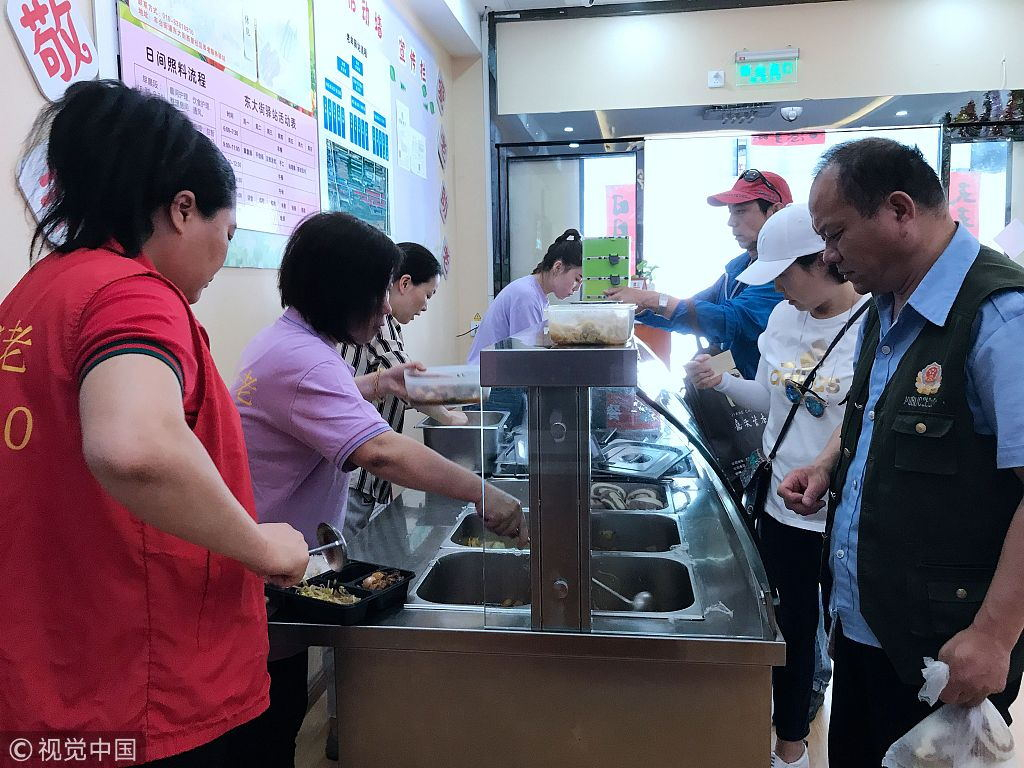
Elders wait in line to get lunch at a community senior care center in Fengtai District, Beijing, May 24, 2018. /VCG Photo
Elders wait in line to get lunch at a community senior care center in Fengtai District, Beijing, May 24, 2018. /VCG Photo
Since 2011, China has been following a similar three-tiered senior care management model, whereby 90 percent of elders are expected to stay at home, seven percent at community centers and three percent at institutional senior care centers. In 2016, Beijing launched a pilot project that established 150 community elder care centers in six of the capital's districts.
Wang Xiuqin, a retired community worker, used to go to her community daycare center regularly. The center is funded privately with subsidies from the government.
Most elders visit the center to have three meals. It costs them 3,000 yuan per month. Those who cannot live independently and are in need of special care pay a monthly fee of 5,000 yuan for extra services.
"Regular health check-ups, such as checking blood pressure, and giving prescription drugs for minor ailments are not a problem," Wang says.
But the amenities are in no way comparable to high-end senior care centers where medical rooms with full-time licensed doctors and registered nurses are set up within the premises. Kangning Jin high-end senior care center even deploys helicopters in times of medical emergency.
"I am fortunate enough to be able to afford a decent senior care center," says Mu.
But for millions of elders, the wheels of time cannot be reversed, and solutions need to come fast before it's too late.

SITEMAP
Copyright © 2018 CGTN. Beijing ICP prepared NO.16065310-3
Copyright © 2018 CGTN. Beijing ICP prepared NO.16065310-3